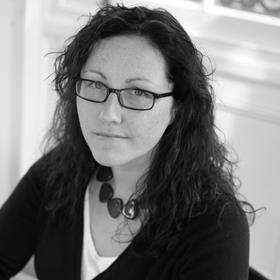The Living Building Challenge provides the opportunity to hit the highest conceivable sustainability targets

Last week I attended Green Vision Building CSR event in Leeds organised by the Centre for Knowledge Exchange. One of the sessions I was most looking forward to was the live webcast from Eden Brukman, a highly infectious advocate of the Living Building Challenge.
For those who might not have come across the Living Building Challenge yet, it is a deep, deep green target based certification scheme. The ‘challenge’ is described as ‘the most advanced measure of sustainability in the built environment possible today and acts to diminish the gap between current limits and ideal solutions’. The International Living Future Institute, who operate the scheme, have approached green building certification from the opposite end than say BREEAM or LEED. Rather than starting with where we are today and adding incremental improvements, they have ‘backcasted’ from their ideal end point.
This idea of ‘backcasting’ is not unique to LBC, and can be found in the thinking behind the ‘Natural Step’, brainchild of Swede Dr Karl-Hendrik Robert. Backcasting can be defined as: “envisioning the end result they want and then mapping out a path to getting there, rather than focusing on making current practices a little less harmful”.
It’s a refreshing change in approach and the scarcity of projects actually certified are testament to the uncompromising nature of the scheme. Even once taking into account the fact the scheme is in its infancy, there is a very low reach. There are only a tiny handful of projects fully certified to date and none even registered in the UK.
Seven ‘petals’ are assessed: Site, Water, Energy, Health, Materials, Equity and Beauty. Most of these are instantly familiar to anyone with experience of LEED or BREEAM, until you get to the end of the list. Beauty has more resonance with the architectural notions of ‘delight’ than the rather more engineer-led, process and target framed LEED and BREEAM.
Don’t let this ‘softer’ side fool you though - despite all the talk of petals, equity and beauty, the targets within site (NO greenfield AT ALL), water (net zero), energy (net zero) and materials (the red list overlap with say the BRE’s Green Guide is fairly minimal) are the highest conceivable. The Living Building Challenge requires that every project meet each of its 20 strict requirements to achieve the certification. This ‘ceiling’ is where far fewer than 1% of building assessed under BREEAM would fall and in excess of ‘Outstanding’ rating.
So how useful is such a tool? I’m a fan of stretch targets and believe more can be gained from trying but failing to meet a just out of reach target, than everyone being mandated to say meet a BREEAM ‘Very Good’ rating through the planning process. Mandating green building certification dilutes the value of the scheme in question, and can fail to adequately reward those projects which are true pioneers (possibly one reason why BREEAM ‘Outstanding’ rating was introduced - similar to GCSE A*). The Living Building Challenge is an opportunity to grab back that top end of the market and demonstrate deep green, uncompromising credentials.




























No comments yet